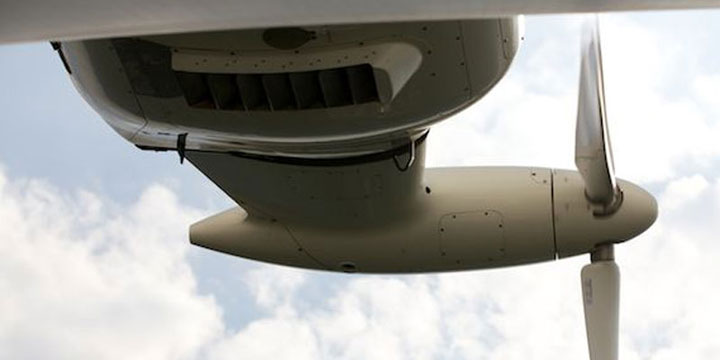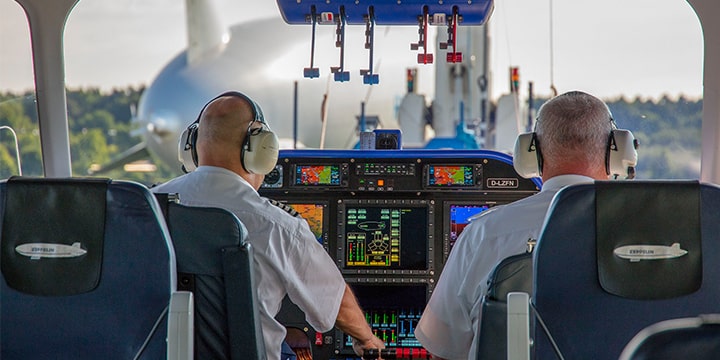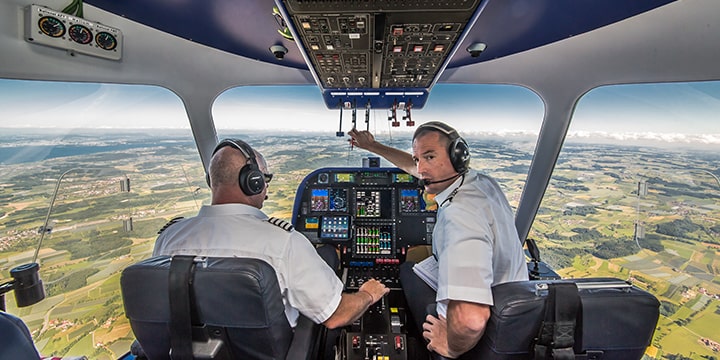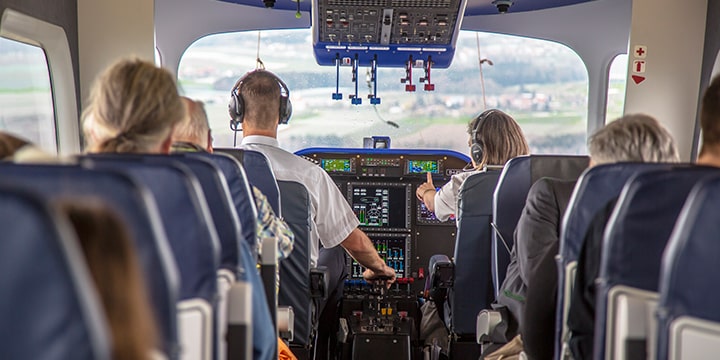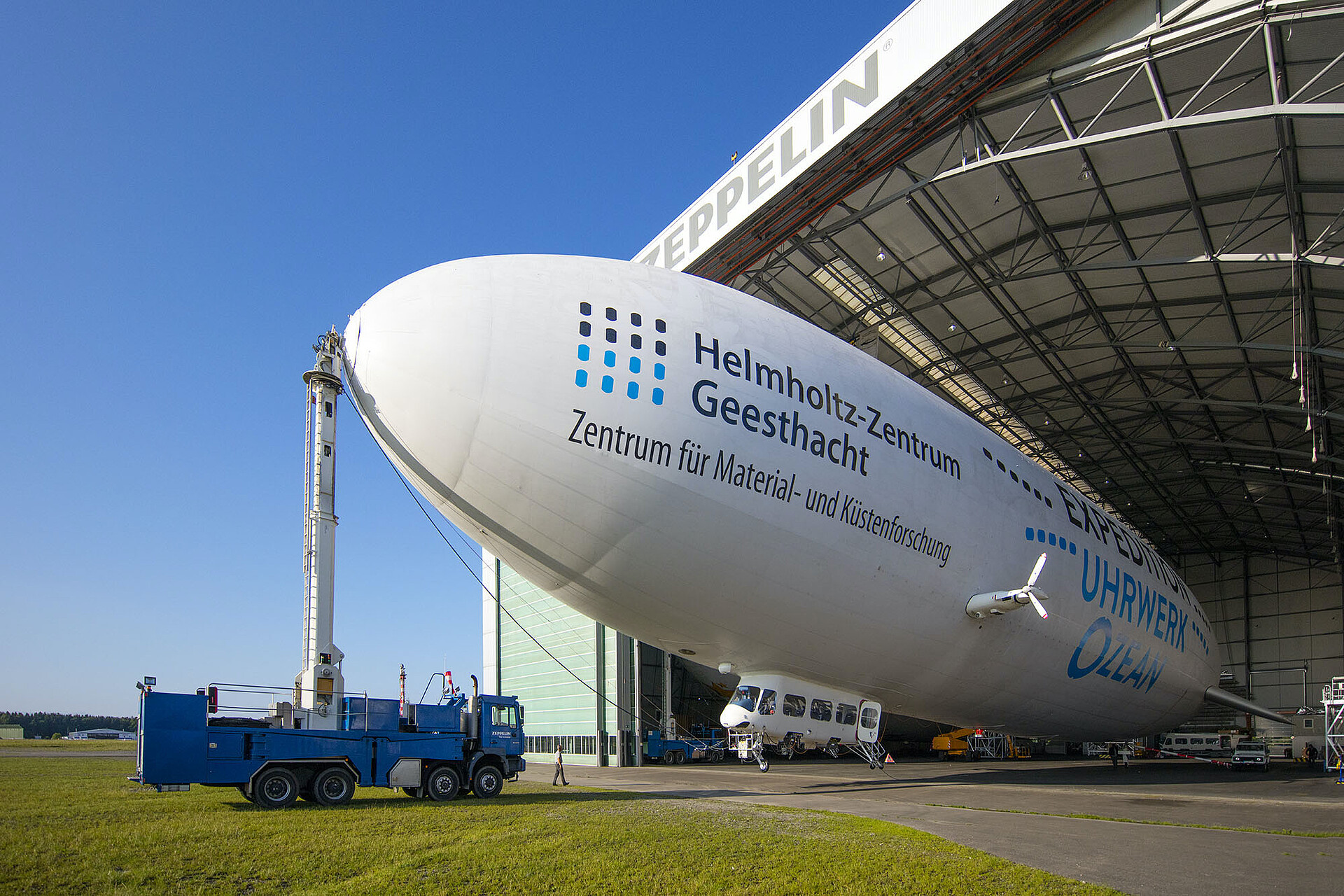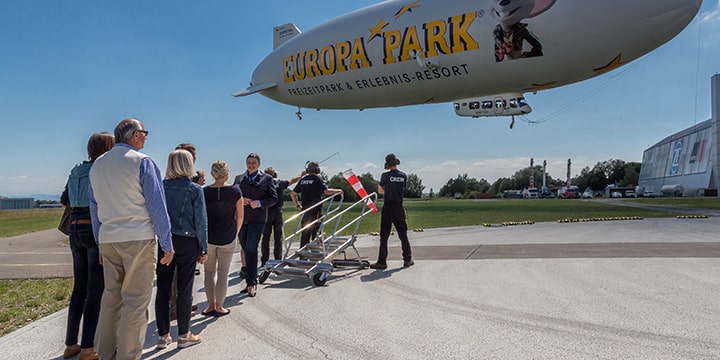Highest flight comfort with maximum safety
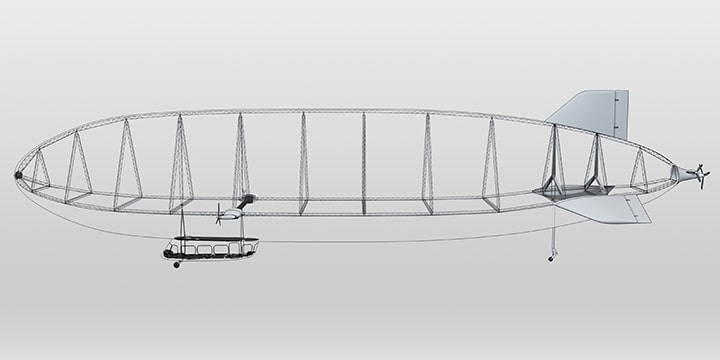
High-tech, specialised development know-how and an unrivalled wealth of experience are the basis for the success of the Zeppelin NT.
Technical data of the Zeppelin NT Zeppelin N07-101
Zeppelin LZ N07-101 – New technology airship
| First flight: | 18 September, 1997 |
| Thrusters: | Lycoming IO-360 with each 147kw/200PS |
| Length: | 75 m |
| Width: | 19,5 m |
| Height: | 17,4 m |
| Envelope volume: | 8.425 m³ |
| Max. take-off weight: | 8.050 kg |
Loading capacity: | 1.900 kg |
| Max. speed: | 125 km/h |
| Max. flight altitude: | 3.000 m NN |
| Max. flight duration: | approx. 22 h |
| Reach: | 1.000 km |
Structure
At around 1,100 kg, the load-bearing structure is lightweight and extremely stable. It consists of 12 segments with triangular carbon fiber frames and three longitudinal beams made of aluminum trusses, which are additionally braced with aramid cables to increase rigidity. All the main components such as the cabin, the tail units and the drives are attached to this rigid structure. This ensures safe maneuverability even in the event of a loss of pressure.
Envelope
Non-flammable helium provides the necessary buoyancy inside the high-strength multi-layer laminate shell. The envelope is under a low overpressure of 5 mbar. Air chambers, the so-called “ballonets”, keep the pressure inside constant at any altitude and ensure that the envelope is always inflated.
Drive systems / Swivel propellers
Thanks to the internal support structure, the engines are mounted where they are most efficient: on the sides and at the rear. Flight comfort in the cabin is not disturbed by propeller noise and vibrations. Propulsion is provided by three proven 200 hp aircraft engines.
Three propellers with a swivel angle of up to 120 degrees and a transverse fan, which is additionally driven by the tail drive, ensure maximum maneuverability and enable unrivalled quiet, low-vibration and economical flying. The unique flight characteristics provided by the swivel propellers include vertical take-off and precise landing, hovering on the spot, turning around the vertical axis and flying backwards.
Cockpit and cabin
The cockpit is a clearly laid out high-tech workstation with state-of-the-art avionics. The fly-by-wire flight controls with sidestick allow precise flight maneuvers and take the strain off the pilots. In the cabin, two pilots and up to fourteen passengers (depending on the configuration) can soar to lofty heights. A variable cabin layout ensures quick conversion for a wide variety of missions.
Take-off and landing
As the take-off and landing procedure is optimized by the swivel propellers, only three ground personnel are required. This means that personnel costs are low and turnaround times are minimal. For take-off, the nose is uncoupled from the mast vehicle. For landing, the airship maneuvers itself into the desired position under its own power using the propeller thrust. Passengers can be changed without having to be attached to the mast. For mooring, only the bow line is coupled to the anchor mast line, the zeppelin is pulled up to the mast and locked hydraulically at the masthead.







